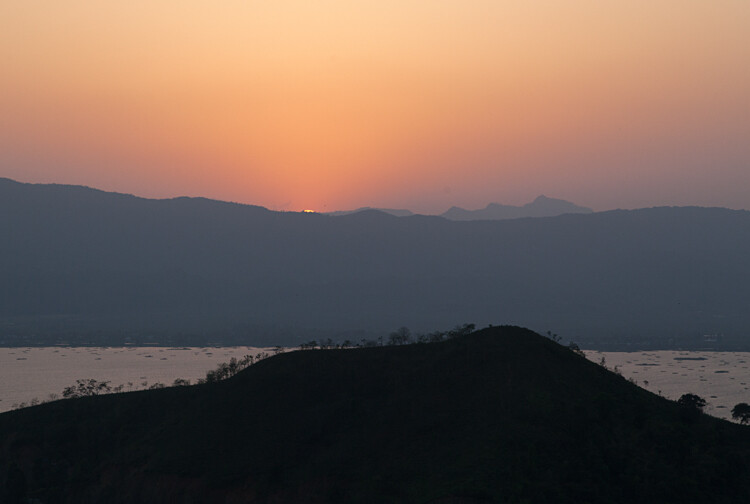The post How to Do Storytelling With Your Images: 8 Useful Tips appeared first on Digital Photography School. It was authored by Ben McKechnie.

As a photographer of people and cultures, I spend a lot of time thinking about storytelling with my images – how I can convey emotions and narratives through a few simple frames.
Beginners often fail to think about the storytelling aspect of photography, and that’s okay. When you’re just starting out, it’s important to focus on lighting, composition, and camera settings. But once you’ve familiarized yourself with those key concepts, what’s the next logical step? How do you hook people for more than just a few seconds?
Storytelling.

In this article, I share eight tips to get you started with storytelling in photography, accompanied by my own images to help illustrate the points. The photos may be taken in far-flung locations, but I promise you: the tips I offer can be applied anywhere on Earth.
1. Include small details to tell a story in a single frame
Imagine your task is to tell the story of a person. A parent, or even yourself.
How would you do it?
A standard portrait wouldn’t tell the full story. A person’s full story is often in the details: a picture of their desk, travel books strewn across a bedroom floor, a close-up of their hands dirty from working in the garden, a wide-angle portrait of them surrounded by a few of their favorite things.
So the next time you’re photographing a person, try to include small details that add to their story.

I didn’t visit India to focus my lens on poverty alone. However, when trying to tell the story of Mumbai, it would have been dishonest of me not to include it. Confronted with the scene above, I saw the gap between the rich and poor. The small details here are my subject’s plastic bag, the skin condition on his arm, and his frail body. A big (and still important) detail is his juxtaposition with a backdrop of expensive high-rise buildings.
2. Aim for variety in a series of shots
This storytelling tip is related to the last point:
You must take a variety of different images of a single situation. Whether you want to photograph a camel market in India, a farmers’ market in a Chicago suburb, or your niece’s birthday party, just creating one type of photo won’t tell the whole story.
Instead, you need portraits, wide-angle shots, shots from up high, shots from down low, action shots, zoomed-in details, and more. All of these perspectives combined tell the whole story.
In the image series below, I tried to tell the story of a sunrise hot air balloon flight over the ancient, temple-strewn plain of Bagan, Myanmar. Capturing a variety of images was key to my success.



3. Take control of the entire frame
Now that you’re thinking about telling stories, you’re not just a photographer; you’re a storyteller, too. And that role involves taking control of the whole frame.
In other words:
Don’t just think about your subject, their lighting, their positioning. Be aware of the whole scene in front of you, including surrounding details, backdrops, shadows, bright areas, etc.
Sometimes, I lie flat on the ground with my camera. Why? I want to include environmental details in the frame that improve the shot through storytelling. I get strange looks, but I don’t care; it’s the price of telling the real story.

Here, I wasn’t just thinking about the position of this gentleman’s face. I was also aware of his three-headed Hindu spear – a key detail in his story – and the flowers on its tips.

4. Plan ahead with a shot list
Whether you’re heading out into your hometown for some street photography or to the Eiffel Tower for some vacation photography, why not create a shot list? I’m talking about ideas for specific shots, angles you want to try, and people you might include in the frame.
Research the kind of shots that other photographers have taken at your destination. Seek out new angles that’ll produce fresh storytelling even at well-known locations.


5. Learn to narrow down, trim, and exclude
Uploading a hundred photos to Facebook, all of a similar setting and taken from the same few angles, is a surefire way to lose people’s attention. Those 100 photos could easily be narrowed down to the 10 essential storytelling shots.
So learn to be selective! Start sharing only your best images.
Loktak Lake (pictured below) was so spectacular that I wandered around a single hilltop taking hundreds of images. It was bliss. A lot of the results were great, but would I really want to dump them all online for friends, family, and followers to sift through? No, I would not!
Instead, it’s important to find a few favorites that tell your subject’s story:


6. Emotions are an important part of storytelling
To capture emotions, you’ll primarily need people and faces. Emotion can also be communicated through body language, so capturing whole bodies works sometimes, too.

At the marvelous Mother’s Market in Manipur, India, I met these lovely ladies (above) animatedly playing a board game. I broke the ice by asking if I could join in. They said “No,” but it made them laugh and I got permission to shoot away. The best photos came after they’d forgotten about me; their natural expressions returned and I was able to capture their emotions.
7. Don’t forget about the basics
In your bid to learn storytelling, don’t forget about settings, composition, and lighting. It’s all too easy to fall out of touch with photography basics, especially when you’re first learning to tell a story with pictures.
After all, when you’re thinking about storytelling, you might start to drift away from photographic fundamentals.
So instead of replacing composition, settings, and lighting with storytelling, make sure everything works together. A shot with beautiful light, excellent composition, perfect exposure, and a great story? That’s how you capture people’s attention!

8. Use narrative structure
How does a traditional novel or movie work? Novels and movies are stories, so they contain beginnings, middles, and ends.
You can do the same with your photos!
If you’re just starting out taking a series of storytelling pictures, try creating a chronological narrative. It’s by no means the only or even recommended narrative structure to follow, but it’s a fun and easy way to practice.
You might tell the story of a single day in a place you know well. Start with sunrise, then take photos throughout the day as the light changes. Conclude the series with sunset and night shots.
Here, I attempted to tell the story of day and night on the rivers running through the cities of Chittagong and Dhaka:




Telling a story with pictures: final words
Now that you’ve finished this article, you’re ready to begin telling stories with your photos!
So remember these tips, get out there with your camera, and have fun.
Now over to you:
Have you tried doing storytelling photography? What was it like? Did you enjoy it? Share your thoughts and storytelling images in the comments below!
The post How to Do Storytelling With Your Images: 8 Useful Tips appeared first on Digital Photography School. It was authored by Ben McKechnie.








































You must be logged in to post a comment.